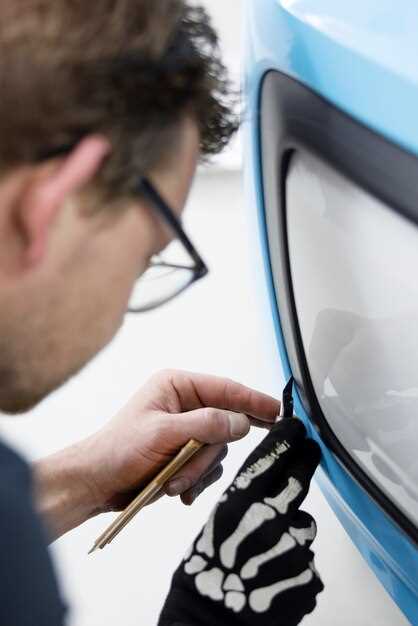
Auto glass repair is an essential aspect of vehicle maintenance that often gets overlooked. From minor chips to extensive cracks, damage to your car’s windshield can compromise safety and visibility. Understanding how insurance coverage works for auto glass repair can save you money, time, and stress when dealing with these issues.
Many drivers are unaware that their auto insurance policy may cover the full cost of windshield repairs or replacements. Coverage typically varies based on the type of insurance you have–comprehensive or collision–and the state where you live. It’s crucial to know the specifics of your policy, as this knowledge empowers you to take immediate action when facing glass damage.
In this article, we will break down the intricacies of insurance coverage for auto glass repair. We will explore the differences between various types of coverage, discuss common exclusions, and provide valuable tips for filing claims. By the end, you’ll have a clearer understanding of how to navigate your insurance policy confidently and ensure that your auto glass needs are met without incurring unexpected expenses.
Understanding Your Auto Insurance Policy’s Glass Coverage

Auto insurance policies often contain specific provisions related to glass coverage, which can vary significantly between insurers. Typically, this coverage can be categorized into two main types: comprehensive coverage and specific glass coverage.
Comprehensive coverage generally includes repairs or replacements for glass damage resulting from events such as theft, vandalism, natural disasters, or collisions. It’s essential to review your policy to determine what types of incidents are covered and whether any deductibles apply. In many cases, insurers waive the deductible for windshield repairs, making it more accessible for policyholders to maintain their vehicles.
Some insurers offer a separate glass coverage endorsement that specifically addresses glass damage. This type of coverage often provides additional benefits, including a more straightforward claims process and potentially no deductible for replacements. It’s crucial to check if your policy includes this endorsement and understand the specific terms associated with it.
When assessing your glass coverage, consider the policy limits and any restrictions. Some insurers impose limits on the types of glass covered, such as only covering windshields while excluding side or rear windows. Understanding these details will help you determine if your needs are adequately met.
Lastly, always consult with your insurance agent or representative to clarify any uncertainties regarding your glass coverage. They can provide insights tailored to your specific policy and help ensure you are well-informed about your options when it comes to auto glass repair or replacement.
The Claim Process for Auto Glass Repair Under Your Insurance
When your vehicle’s glass is damaged, filing an insurance claim for repair can seem daunting. Understanding the claim process can help streamline the experience and ensure you get the coverage you deserve. Here are the steps to follow:
- Assess the Damage: Before contacting your insurance company, inspect the damage to determine whether it affects visibility or poses safety issues. Common issues include cracks, chips, and major shattering.
- Check Your Coverage: Review your insurance policy to understand your coverage for auto glass repair. Some policies cover repairs with no deductible, while others may require a claim to be filed.
- Contact Your Insurance Provider: Reach out to your insurance company to report the damage. Have your policy number and details about the incident ready. Official representatives can clarify coverage and the next steps.
- Document the Damage: Take clear photographs of the damaged area to provide proof for your insurance claim. This documentation may be useful if questions arise about the extent of damage.
- File a Claim: Follow your insurer’s process to officially file a claim. This may involve filling out an online form, calling a claims department, or visiting a local office. Include the photographs and any necessary documentation.
- Choose a Repair Shop: Depending on your policy, you may have the option to choose a repair shop or be directed to one by your insurer. Ensure that the chosen shop is approved by your insurance company, if necessary.
- Repair Appointment: Schedule an appointment for the repairs. During this time, the technician will assess the damage and provide recommendations, whether a simple repair or full replacement is needed.
- Follow Up: After the repairs, confirm with your insurance company that the claim is processed and any necessary payments are settled. Keep copies of all documents related to the repair for your records.
By following these steps, you can navigate the claim process efficiently and ensure that your auto glass repair is covered under your insurance plan.
Comparing Costs: Out-of-Pocket vs. Insurance for Auto Glass Repair

When dealing with auto glass repair, one of the critical considerations is the cost involved. Depending on the severity of the damage, out-of-pocket expenses can vary significantly. For minor chips and cracks, repair costs might range from $50 to $150. However, full windshield replacements often escalate the price to between $200 and $1,000.
Choosing to pay out of pocket means you will bear the total cost without any assistance from an insurance policy. This approach may be beneficial for individuals with a high deductible or those who wish to avoid potential future premium increases. On the other hand, if you opt to utilize insurance, most policies cover the cost of auto glass repair, sometimes with little to no deductible. However, be cautious; utilizing your insurance for repairs may impact your premium rates during subsequent renewals.
When considering insurance options, it’s essential to review your policy details. Some carriers offer comprehensive coverage for glass damage, which can mitigate repair costs significantly. Additionally, many states mandate coverage for windshield repairs without deductibles, offering an advantage for drivers in those areas. Compare the specifics of your policy, including deductible amounts and coverage limits, to determine the most cost-effective route.
Ultimately, the decision between out-of-pocket expenses and using insurance for auto glass repair hinges on individual circumstances, including financial situation, insurance terms, and the condition of the vehicle. Evaluating these factors can help drivers make informed decisions that align with their financial goals and driving habits.

